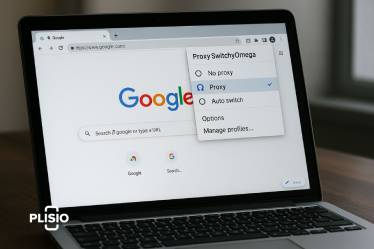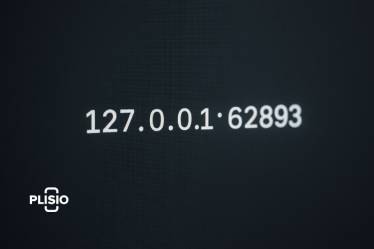Blockchain Security: Why It’s Critical in 2026

The total value of all the assets on the blockchain was more than $1.4 trillion in early 2025. This means that it's more important than ever to keep the blockchain safe against cyber dangers that are unique to it.
The most recent Chainalysis study (2025) says that crime using cryptocurrencies dropped by 55% in 2024 compared to the year before. The safety of public blockchains got better, which is why this happened. Hackers nevertheless managed to steal more than $2.1 billion in cryptocurrency, and DeFi platforms lost more than 70% of that. Cybercriminals are using more complex phishing schemes and more specific smart contract attacks, which shows that blockchain and cyber security require better, more flexible ways to protect themselves.
The fast growth of decentralized technology is pushing new ideas, but it also creates complicated security holes that security specialists need to fix to make sure that blockchain systems are safe. Experts say that by the end of 2025, more than 80% of banks that are looking into blockchain solutions will have made a formal plan for blockchain security, just like they did when the internet was new.
We'll discuss about the biggest difficulties with the crypto ecosystem, how to protect yourself, and the current state of security as blockchain use develops, focusing on threats and weaknesses.
Updated 2025 Security Insights:
- Transaction volumes on public blockchain networks have seen significant fluctuations over the past year.Daily transactions on Bitcoin and Ethereum combined exceeded 3 million in Q1 2025, a 15% increase compared to Q1 2024.
- Bridge attacks represent a significant challenge in maintaining the security of blockchain implementations.Cross-chain bridge exploits accounted for $1.4 billion in losses in 2024 — a slight drop from $1.6 billion in 2023 but still representing 68% of total stolen crypto, highlighting significant security vulnerabilities in these systems.
- User-related breaches can significantly compromise the level of security within blockchain networks.Nearly 35% of stolen funds in 2024 were linked to phishing and social engineering, with reported phishing domains increasing by 28% year-over-year, highlighting the need to assess security in blockchain networks.
- Layer 2 growth:Layer 2 solutions processed over $120 billion in transaction volume in 2024, but also saw a 20% rise in reported security incidents related to DoS and censorship, raising concerns about the security and performance of these systems.
- Regulatory actions:2024 marked a record year for enforcement, with over $600 million in seized illicit crypto assets by global regulators in their efforts to ensure blockchain security and integrity.
These figures underscore that while blockchain technology remains one of the most secure transaction systems ever developed, it is not invulnerable. Proactive measures, continuous audits, and user education are essential to preserving trust in this rapidly expanding digital economy.
Common Blockchain Security Issues and Cyber Threats
Blockchain security is using cybersecurity tools, techniques, and best practices to minimize risks and stop unwanted access and attacks on blockchain networks.
All blockchains use distributed ledger technology (DLT), but they protect themselves and work in different ways. This is especially true for how they protect against cyber attacks, which might affect how many people utilize blockchain solutions. There are good and bad things about both public and private blockchains. This is largely because their network architectures are so different—open versus closed—which has an effect on their overall security. These differences have a huge impact on how safe each one is.
Decentralized Blockchain Technologies and Security Challenges
Bitcoin and Ethereum are examples of public blockchains that are open and allow anybody to join and help validate transactions. However, they must also be on the lookout for security problems. The codebases of these public blockchains are open-source, which means that anyone can see them and a group of engineers and security experts is always looking at them. This group regularly checks the code to find bugs, security holes, and other problems that could affect network security. The fact that it is open source means that a lot of people can work on it together to make it more secure, add new features, and make it run faster. However, this also means that hackers and other bad actors can always look for and perhaps exploit weaknesses.
Understanding Blockchain and Security Risks
The whole globe is accountable for keeping public blockchains like Ethereum safe. This shows how powerful security solutions made by the community can be. This includes validators and node operators, who keep the public blockchain safe, as well as the original creators, who gave the network its first source code and helped it expand. Hundreds of thousands of engineers are also always working on the ecosystem to make the code better and better. Users also need to do their part by following the best security practices. No one individual or group has full control over security on public blockchains since they are decentralized. This makes the network less vulnerable to different kinds of attacks, which is a critical part of how blockchain functions as a decentralized system.
Different Types of Blockchain and Their Security Measures
Public blockchains frequently do better when there are groups of people who work on development and getting others involved in the community. The Ethereum Foundation, for example, actively supports the development of Ethereum. On the other hand, Bitcoin was started by the pseudonymous Satoshi Nakamoto and is maintained by a group of engineers that work on the Bitcoin Core software. This software is always changing, therefore it needs to be updated and maintained all the time to repair security holes and deal with new problems. A consensus mechanism controls changes to the network. Bitcoin Improvement Proposals (BIPs) are how people suggest modifications to Bitcoin. Anyone can submit a BIP, not just the core maintainers. This makes the process of changing the network more democratic.
Security in Private Blockchains
Private blockchains are closed networks that only certain people can access. This makes them more centralized than public blockchains. This centralization can make it harder to deal with some outside threats, but it also creates a single point of failure, which can be a big security risk. Because of this, the company that runs the network is mostly responsible for keeping a private blockchain safe, which means that security and performance must be adapted to each case. This institution must have strong security measures in place to protect against the weaknesses that come with centralized systems.
Private blockchains may not have the same security-by-numbers and decentralized benefits as public blockchains, but they are often faster and more efficient. This is because they don't need as much processing power to reach an agreement. But the central authority in private blockchains, which regulates who may access the network and what they can do, also has the power to shut down or change the network. This is a unique security issue that isn't normally found in public blockchains, since no one person or group has full control. To keep both internal and external dangers at bay, private blockchains need strict internal security measures that follow the guidelines set by the Institute of Standards and Technology.
Consensus Mechanisms and Secure Blockchain Solutions
Blockchain is a way to handle transactions that doesn't rely on a single point of control. It uses a digital ledger system made up of a worldwide network of computers, called nodes, that use blockchain cryptography to reliably check and record transactions. Because everyone has a copy of the complete ledger, this structure makes sure that there is no central authority or single point of failure. Sending cryptocurrency and other transactions are put into blocks and then uploaded to the blockchain. This shows how quickly blockchain can speed up the processing of transactions.
Before a block can be added to the blockchain, a consensus process must check it. The two primary types of consensus processes are Proof-of-Work (PoW) and Proof-of-Stake (PoS). In PoW, miners check transactions by solving hard math problems. In PoS, validators have to lock up some of their tokens to be able to check transactions. These validators, whether they are miners in proof of work or stakers in PoS, are rewarded for their labor to keep the network safe from probable security flaws. This is how strong security measures are put in place. This step of checking makes sure that everyone on the network agrees that the transactions are real. When a block is full, it is cryptographically sealed and connected to the block that came before it. This creates a chain that can't be broken, which makes the data on the blockchain safer and more trustworthy. It would be very easy to notice and hard to commit fraud if someone changed any block because the ledger is spread out and blocks are connected together via cryptography.
Bitcoin and Ethereum are two of the most well-known cryptocurrencies that use blockchain technology. It can also transform how digital transactions function and generate trust without needing a middleman.
Security of Transactions on a Blockchain
In contrast to traditional financial systems that operate on permission-based fund withdrawals, blockchain transactions are initiated directly between peers without intermediaries, showcasing the advantages of a permissioned blockchain model. Each user manages their digital assets using aprivate key—a cryptographic tool that ensures secure access and transaction authentication.
Personal accountability is highly crucial in the realm of bitcoin since once a transaction is confirmed on the blockchain, it can't be changed. Because of this, it's very impossible to obtain back money that has been lost or stolen. This highlights how crucial it is to follow the right security steps and keep your private keys safe. This peer-to-peer transaction paradigm not only makes things safer by getting rid of middlemen, but it also puts greater pressure on the user to be careful and responsible when it comes to maintaining their digital assets.
Vulnerabilities and Security in Blockchain Technology
While blockchain is often touted as being inherently secure, it is not completely immune to security threats. However, its unique structural features significantly enhance its intrinsic security properties:
- CryptographyBlockchain transactions are secured using cryptographic principles, which ensure data security and authentication. The public key infrastructure (PKI) provides users with a public key for receiving assets and a private key for securing them.
- Decentralization is a fundamental aspect of the nature of blockchain, contributing to its security model by distributing control across multiple nodes, which enhances the potential of blockchain applications.: Unlike centralized systems, blockchains are maintained across a dispersed network of computers, or nodes. This means that compromising a single node—or even several—does not jeopardize the entire system, thanks to the principles of blockchain consensus that ensure resilience.
- Consensus MechanismsThese algorithms ensure that all nodes agree on the validity of transactions, thereby protecting blockchain integrity and enhancing the security of the network. Protocols like Proof-of-Work (PoW) and Proof-of-Stake (PoS) protect against Sybil attacks, where an attacker attempts to gain control of the majority of the network.
- Immutability is a key feature that enhances the integrity and security of blockchain transactions, making it essential for comprehensive security in various blockchain environments.: Once a transaction is recorded in a block and added to the blockchain, it cannot be altered. This permanence ensures that transaction histories remain unchangeable, a critical feature of blockchain that enhances trust.
- Transparency is a crucial element in the security and integrity of blockchain systems, fostering trust among users and stakeholders while enhancing the features of blockchain.Many blockchains operate as public ledgers, allowing anyone to view any transaction, thus making any fraudulent activity more detectable and enhancing overall data security; this transparency is a key feature of how blockchain can enhance trust in digital transactions.
Despite these robust security measures, vulnerabilities still exist. The same features that make blockchain revolutionary, like its immutability, can also pose risks if the system itself is ever compromised.
Types of Blockchain Security Breaches can compromise the integrity of the entire blockchain system.
Blockchain vulnerabilities can be categorized into three main types, which the institute of standards and technology aims to address through enhanced guidelines.
- Ecosystem VulnerabilitiesThese encompass flaws within the broader blockchain ecosystem, including issues with node configuration or network communications that can threaten the security of public blockchain networks.
- Smart Contract and Protocol Attacks are significant concerns in the realm of cyber security.These target the additional layers that operate atop the blockchain system, such as blockchain applications.Smart contracts are a crucial component of blockchain applications, but they can also introduce vulnerabilities.and other protocols, which can contain exploitable bugs or design flaws, highlight the need for standards set by the institute of standards and technology to enhance blockchain security.
- Infrastructure and User Attacks pose significant risks to the common security of blockchain networks.: These focus on elements like digital wallets and exchange platforms, as well as user behavior, which can lead to stolen keys or phishing attacks.
It is crucial to understand that while blockchain provides several security advantages, it is not devoid of potential security challenges that require vigilant management and continuous enhancement.
Security Risks for Users and Blockchain Platforms
A blockchain network with fewer nodes is more likely to be attacked than one with numerous nodes spread out. This makes the network less secure and requires that strong security measures are needed. It is now much tougher to do Sybil attacks or 51% attacks on well-known public blockchains like Bitcoin or Ethereum since they need a lot of computing power or valuable assets. This makes these networks safer. But it's really crucial to know about all the possible security weaknesses, especially for organizations that wish to use smaller, fresher blockchains or develop their own with blockchain technology.
Sybil Attack refers to a common security threat in blockchain networks.
A Sybil attack targets the peer-to-peer layer of a blockchain network, where a malicious actor attempts to gain control over multiple nodes to influence network operations.
A 51% or Double-Spending Attack poses significant risks to public blockchains, emphasizing the need for robust security controls.
The Institute of Standards and Technology believes that this attack puts Proof-of-Work blockchains at danger, which illustrates how crucial it is to have effective security measures. If an attacker controls more than 50% of the network's mining power, they can modify the confirmations of transactions. This might let money be spent twice and preventing new blocks from being added.
Centralization Risks and their impact on network security are critical considerations in blockchain systems.
Public blockchains are predicated on decentralized ideals, but things like mining pools can make them more centralized, which is a huge security risk that could harm the integrity of blockchain participants. It can be less safe when power is concentrated in one place. A lot of blockchain nodes also use centralized cloud services like Amazon Web Services. A hit on this kind of centralized infrastructure may knock out a lot of nodes, which would make the network more stable and easier to attack.
Network Congestion
The blockchain network gets crowded when there aren't enough validators to handle all the transactions that are being transmitted. This highlights how crucial it is to have robust security features to deal with the stress. This can make transactions take longer, cost more, and in the worst cases, it can even cause the network to go down or become unstable. These kinds of difficulties can make consumers less confident that the network can handle a lot of transactions rapidly, which can hamper the general use of blockchain technology.
It's crucial to know about these weaknesses in order to maintain blockchain networks safe and running well. This is especially true since the technology is continually growing and being used in new ways.
Vulnerabilities in Protocols and Smart Contracts on Blockchain Networks
Bridge Attacks and the importance of blockchain security refers to the need for protective measures against such vulnerabilities, as highlighted by the institute of standards and technology.
Blockchain bridges facilitate the transfer of assets between different blockchain networks, enhancing the decentralized finance (DeFi) ecosystem. However, because they often hold large amounts of assets and can be less secure than the blockchains they connect, bridges have become prime targets for hackers. Notably, bridge attacks constitute approximately 70% of cryptocurrency-related cyber attacks, highlighting their vulnerability.
Layer 2 Vulnerabilities can expose applications of blockchain to various security threats, necessitating ongoing security assessments.
General blockchain security concerns extend to Layer 2 solutions, with additional specific vulnerabilities. These include potential transaction censorship by rollup providers and attacks such as Denial of Service (DoS) and malware targeting these providers, which can disrupt the operations of these networks.
Protocol Hacks and Exploits can undermine the features of blockchain, necessitating constant vigilance and improvement in security measures.
In the DeFi sector, protocol hacks are particularly troubling, leading to substantial financial losses and eroding trust in the ecosystem. Despite regular security audits intended to mitigate risks, the complexity of these financial protocols can allow vulnerabilities to remain undetected. A significant incident was the BadgerDAO hack, where a compromised system highlighted the vulnerabilities in blockchain security, underscoring the need for guidelines from the institute of standards and technology.Cloudflare provides security controls that help protect public blockchains from various security incidents.API key enabled the theft of $120 million.
Other Smart Contract Vulnerabilities can undermine the security model of decentralized applications, necessitating thorough security assessments to identify potential risks in blockchain data management.
Smart contracts are susceptible to coding errors that can be exploited maliciously. A historical instance of such a vulnerability was the DAO hack on Ethereum, where an attacker drained about a third of TheDAO'sfunds, worth roughly $50 million at the time. This major security breach resulted in a divisive hard fork within the Ethereum community, ultimately leading to the split into Ethereum (ETH) and Ethereum Classic (ETC).
Security Threats to Infrastructure and Users in the Cryptocurrency Ecosystem
Popular Software Vulnerabilities can undermine the integrity of blockchain protocol, leading to potential exploits.
Cryptocurrency walletsand commonly used software are frequent targets of cyberattacks. A striking instance was the breach of a widely used public blockchain network, which raised concerns about overall blockchain security.Solana mobile is a promising application of blockchain technology that aims to enhance the security of mobile transactions.The wallet, Slope, where hackers managed to steal over $8 million in SOL, highlights vulnerabilities that can be stored on the blockchain. The attack was so significant that it initially raised concerns about the security of the Solana blockchain itself.
Centralized Exchange Hacks
Centralized cryptocurrency exchanges, which facilitate the trading of digital assets, are perennial targets for cybercriminals. The infamous Mt. Gox incident in 2014, where hackers stole approximately 850,000 bitcoins, underscores the potential vulnerabilities of these platforms.
Malware Attacks
Cyber attackers often deploy malware to steal wallet keys or execute unauthorized transactions, underscoring the importance of implementing robust security best practices. One sophisticated method involves malware that detects when a cryptocurrency address is copied to the clipboard and then swaps it with the attacker's address during pasting.
Phishing Attacks
In phishing scams, attackers deceive users into revealing sensitive information such as private keys or passwords, highlighting the importance of robust security features in safeguarding blockchain assets. These schemes typically employ fake websites or messages that mimic legitimate sources to trick users.
SIM Swap Fraud is a significant threat to the functionality of blockchain networks, as it compromises user accounts.
Using SMS for multi-factor authentication is risky due to the threat of SIM swap attacks. In these cases, attackers transfer a victim's SIM card details to their device, often by impersonating the victim to the service provider, thereby gaining control over accounts associated with the phone number.
Social Engineering Scams pose significant threats and vulnerabilities to users of blockchain technology.
These scams involve tricking individuals into sending cryptocurrency or revealing private keys and passwords under deceptive pretexts, emphasizing the need for improved cyber security awareness among blockchain participants.
User Errors are a common cause of security incidents in the blockchain space, emphasizing the need for education on security best practices.
Mistakes made by users, such as losing private keys, inadvertently sharing them, or sending assets to incorrect addresses, represent significant risks to the integrity and security of their assets. However, these issues stem from user error rather than inherent flaws in blockchain technology.




